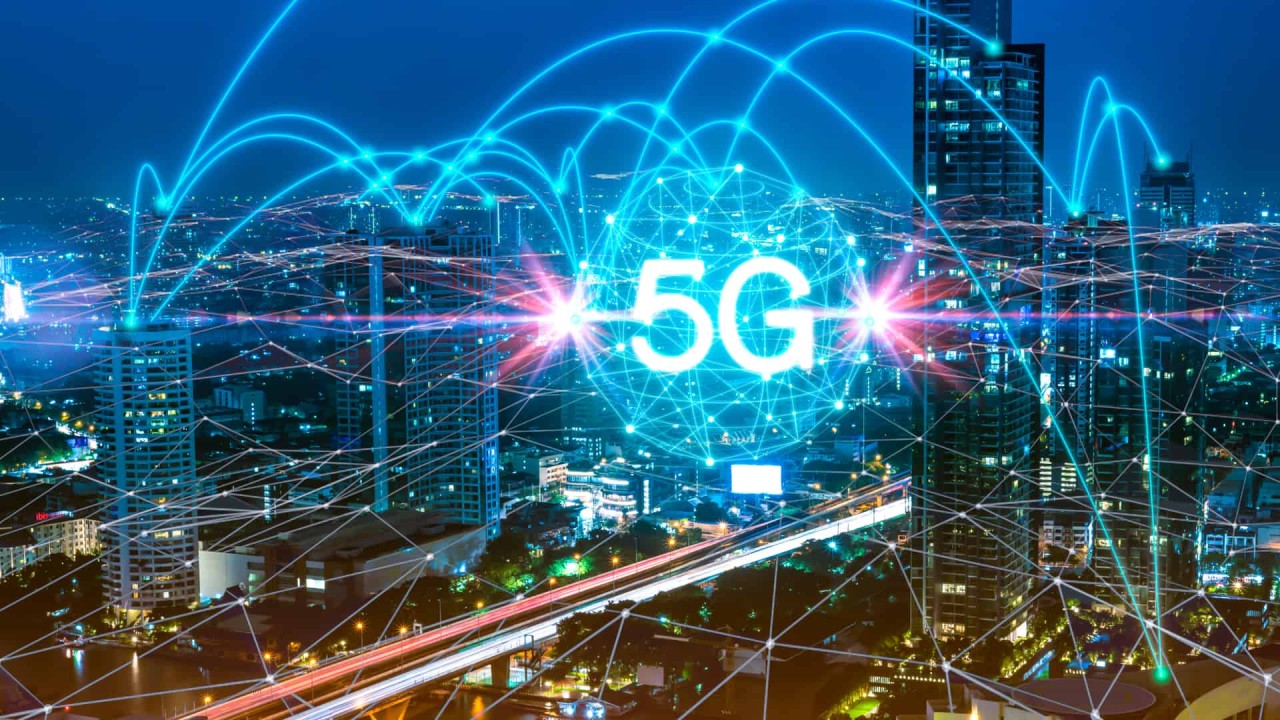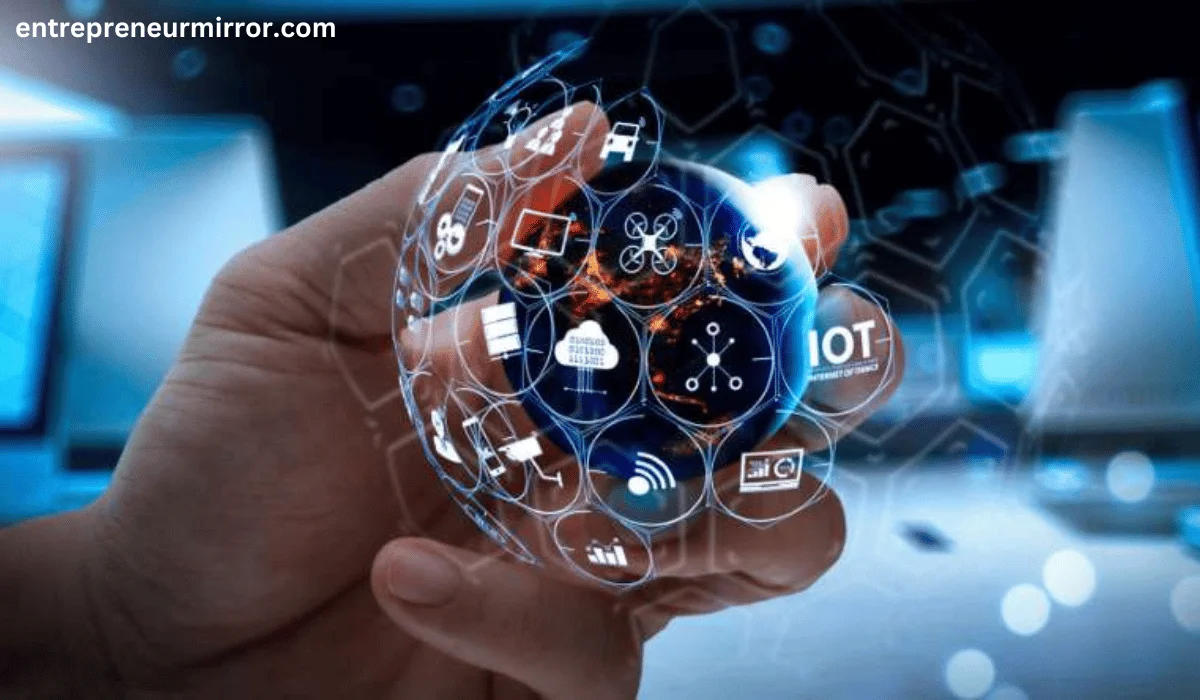Over the past few decades, technology has radically transformed our lives—smartphones, high-speed internet, and the Internet of Things (IoT) are just a few examples. Now, the arrival of 5G, or fifth-generation wireless technology, is set to take that transformation to the next level. Unlike previous wireless technologies, 5G is more than just faster internet on your phone—it’s a foundational tech revolution that will impact almost every part of daily life.
With speeds up to 100 times faster than 4G, ultra-low latency, and the ability to connect millions of devices simultaneously, 5G isn’t just an upgrade. It’s a leap forward. In this article, we’ll dive into the core features of 5G and explore how this technology will revolutionize your everyday life, from the way you work and travel to how you shop, receive medical care, and interact with your home.
1. Work from Anywhere: Remote Work Goes Next-Level
The COVID-19 pandemic normalized remote work, but 5G is what will unlock its full potential. Today, many remote workers face frustrating delays in video calls, slow uploads, or unreliable connections. These issues often arise from the limitations of current 4G and home broadband networks.
With 5G, expect:
- Seamless video conferencing, even with large groups in HD or 4K.
- Instant file uploads and downloads, thanks to speeds exceeding 10 Gbps.
- Lag-free collaboration on cloud-based platforms like Google Workspace, Microsoft Teams, or design software like Figma and Adobe Creative Cloud.
More importantly, 5G will enable true work mobility. Imagine editing 4K video or running a full software development environment from a remote mountain lodge or beach resort. As 5G coverage expands, it will liberate the workforce from traditional office spaces entirely.
2. Smart Homes Become Smarter—and Truly Connected
If you own a smart speaker, thermostat, or doorbell camera, you’ve already taken a step into the smart home future. But current systems can lag, disconnect, or bottleneck due to limited network capacity. 5G can handle up to 1 million devices per square kilometer, compared to just 100,000 for 4G.
Here’s what that means for your home:
- Instant device communication: Your security camera alerts your smart lights, which in turn notify your smartphone—all in real time.
- Smart appliances that optimize themselves: Refrigerators tracking expiry dates, washing machines running when energy rates are cheapest, and HVAC systems adjusting based on your movement.
- Home entertainment like never before: 5G-powered streaming means buffering is history. You’ll enjoy 8K video streaming, AR gaming, and VR fitness right from your living room.
This connectivity makes smart homes more energy-efficient, secure, and responsive, giving you peace of mind and convenience like never before.
3. Healthcare Gets Faster, Smarter, and More Personal
One of the most promising aspects of 5G is its potential to revolutionize healthcare. With ultra-reliable low latency communication (URLLC), medical data can be transmitted in real time, enabling a new era of telehealth and remote medicine.
Here’s how it will impact your everyday care:
- High-definition virtual doctor visits with real-time diagnostics from wearable devices that stream your vitals instantly.
- Remote surgery: Surgeons can operate using robotic arms located thousands of miles away, guided by 5G-enabled cameras and sensors.
- Smart ambulances: 5G allows emergency medical teams to communicate with hospitals en route, sharing live patient data and receiving instructions before arrival.
- Wearable tech upgrades: Smartwatches and health bands will evolve into powerful medical monitors that detect early signs of heart attacks, strokes, or respiratory issues and alert you—and your doctor—instantly.
By removing delays in data transmission, 5G empowers faster diagnoses, more precise treatments, and life-saving interventions in time-critical situations.
4. Your Daily Commute Will Change Forever
Whether you drive to work, take public transit, or bike around the city, 5G is poised to make your daily travel faster, safer, and more efficient. It will be the backbone of autonomous vehicles and smart transportation systems.
Here’s what the near future could look like:
- Self-driving cars that communicate with traffic signals, road sensors, and even other vehicles to optimize routes and avoid accidents.
- Smart traffic systems that adjust lights based on real-time congestion data, cutting down on your commute time.
- Public transit with predictive analytics: Buses and trains that adjust routes based on passenger demand and traffic conditions, and provide live updates straight to your phone.
- Parking that finds you: 5G-enabled sensors in parking lots will communicate with your vehicle or phone to direct you to the nearest available space.
The result? Less time in traffic, fewer emissions, and a smoother, safer urban mobility experience.
5. Entertainment Without Limits: The Future Is Immersive
Entertainment is already digital, but 5G is set to deliver an entirely new experience—one that is immersive, interactive, and on-demand like never before. Say goodbye to buffering, lag, or download delays.
With 5G:
- Augmented reality (AR) and virtual reality (VR) become mainstream. Imagine attending a live concert from your living room, interacting with 3D holograms of your favorite artists, or playing VR games with real-time responsiveness.
- Cloud gaming takes off: Platforms like Xbox Cloud Gaming, Nvidia GeForce Now, and PlayStation Now will run console-level games on your phone or tablet with no downloads.
- Multi-angle live sports broadcasts: Watch a football game from the quarterback’s helmet cam or switch views on the fly using your phone.
- 8K streaming and interactive TV: You’ll not only watch shows in ultra-high definition but also make choices that affect storylines in real time, like an interactive Netflix episode.
5G ensures your entertainment is no longer confined to screens or locations. It becomes more personalized, immersive, and social.
6. Shopping and Retail Enter the Virtual Age
The way we shop is also undergoing a radical transformation. While online shopping already dominates, 5G is creating a bridge between physical and digital retail experiences.
Here’s what’s coming:
- AR-powered virtual try-ons: Want to try a pair of glasses or see how a sofa fits in your living room? 5G enables real-time, high-resolution AR overlays, giving you that capability from your phone.
- Smart mirrors and interactive displays in physical stores that let you preview outfits, browse inventory, or customize products instantly.
- Frictionless checkout: Walk into a store, pick up what you want, and walk out—your account is charged automatically via smart sensors, just like Amazon Go stores.
- Personalized experiences: Using AI and real-time data, retailers can offer hyper-personalized recommendations and promotions as you shop, based on your habits and preferences.
5G will make shopping faster, smarter, and more fun, turning it into a blended experience between online convenience and in-store engagement.
7. Education and Learning Without Borders
Traditional classrooms are being replaced by digital platforms, and 5G is set to redefine how education is delivered. With high-speed, reliable connectivity, learning becomes more interactive and accessible—no matter where you are.
Expect:
- VR classrooms where students can explore ancient Rome, dive into human anatomy, or interact with classmates across the globe—all in real time.
- Remote labs and workshops powered by IoT and robotics that allow students to run experiments and manipulate tools via the cloud.
- Instant access to resources, from 3D models to live expert sessions, enabling a truly global and enriched learning environment.
Whether you’re a student in a remote village or a professional learning a new skill, 5G democratizes education, making quality learning experiences available to all.
8. Industrial Automation and the Rise of Smart Cities
Beyond personal use, 5G is driving innovation in manufacturing, agriculture, logistics, and city planning. Smart factories will use 5G to control machines, monitor supply chains, and adapt production lines in real time. Farmers will use connected sensors to track soil health and optimize irrigation, while drones monitor crop conditions.
Cities will become more connected:
- Smart grids manage electricity flow and reduce outages.
- Real-time surveillance and emergency response systems improve safety.
- Waste management and pollution control become data-driven and efficient.
This level of connectivity will allow cities to operate more like ecosystems—efficient, responsive, and sustainable.
Challenges and Considerations
While 5G brings enormous promise, it also comes with challenges:
- Infrastructure: Installing millions of small cells and antennas is expensive and time-consuming.
- Privacy and security: More data means more risk. Governments and businesses must ensure that personal data is protected.
- Access and equality: Will rural and underserved communities have equal access to 5G benefits?
To truly revolutionize everyday life, 5G must be inclusive, secure, and responsibly managed.
Conclusion: The 5G-Powered Future Is Here
The arrival of 5G marks a turning point in the digital age. It’s not just about faster mobile browsing—it’s about transforming the way we live, work, play, and interact with the world. From immersive entertainment and real-time healthcare to smart homes and autonomous vehicles, 5G is laying the foundation for a connected future that was once the stuff of science fiction.
As 5G networks continue to expand globally, the question isn’t if it will impact your life—but how soon. So buckle up—because the 5G revolution is just beginning, and it’s going to change everything.
For more insights into tech, lifestyle, and innovation, stay tuned to [https://newssnax.site/]




Leave a Reply